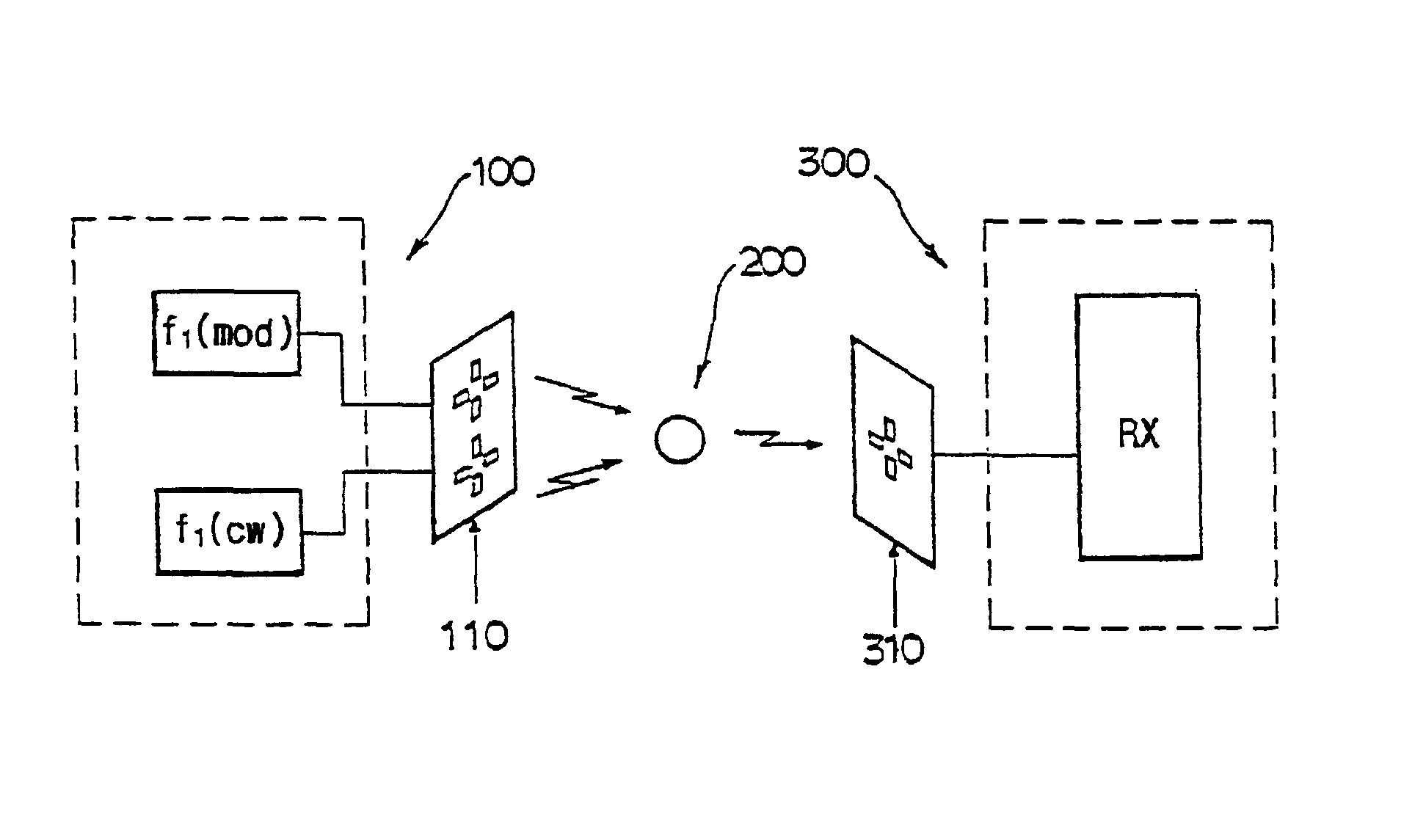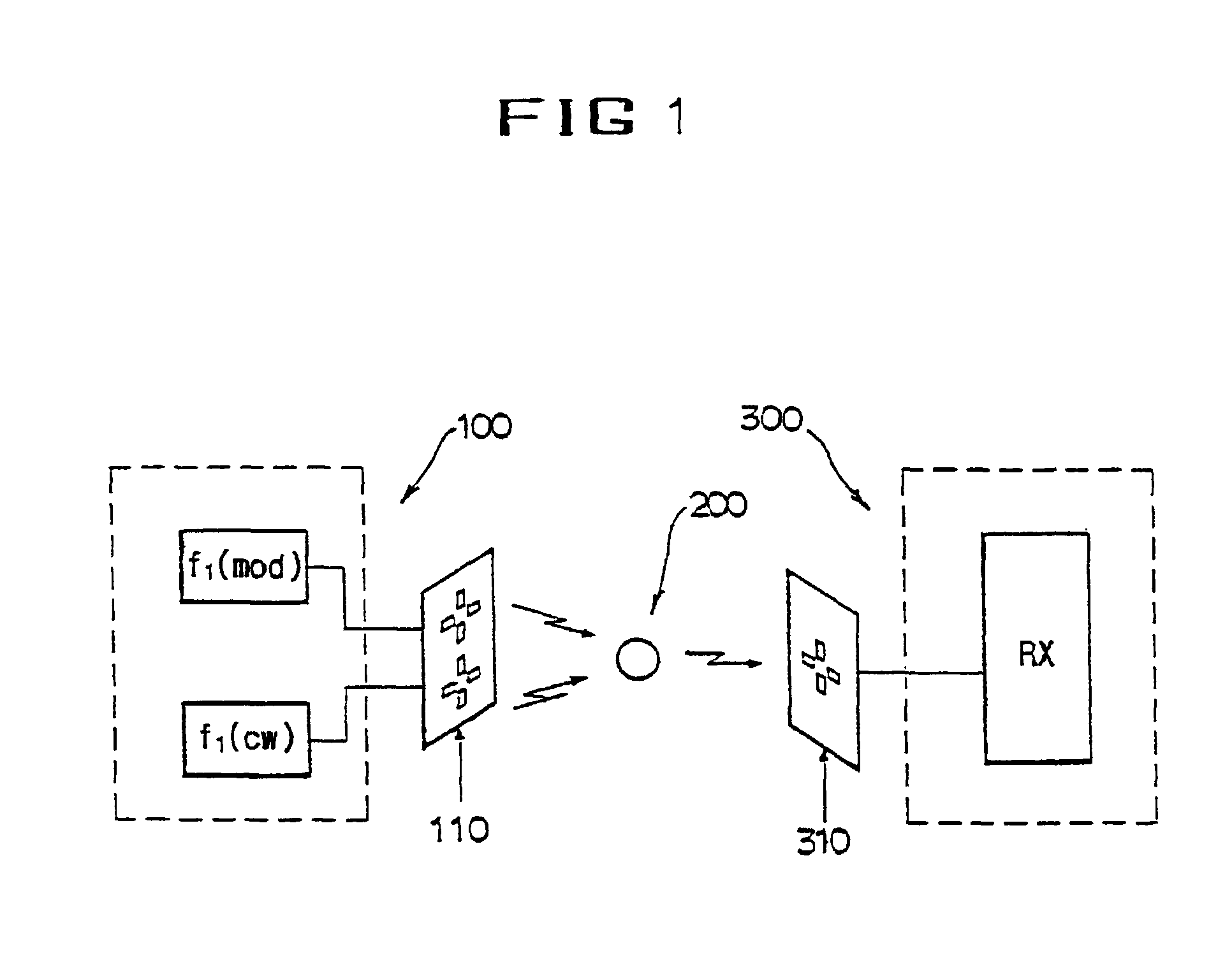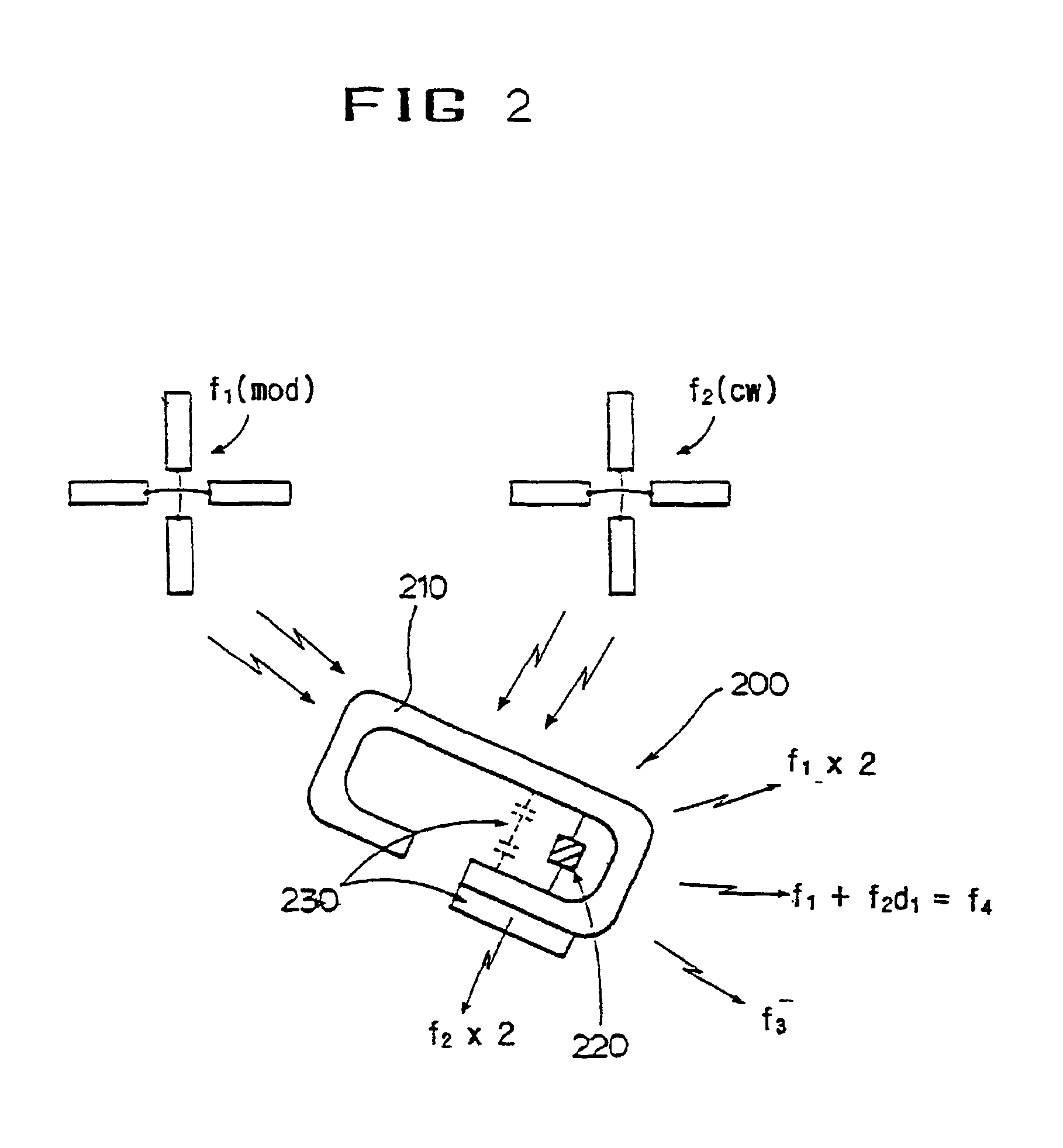Passive transponder identification and credit-card type transponder
a transponder identification and credit card technology, applied in the direction of differential interacting antenna combinations, instruments, mechanical actuation of burglar alarms, etc., can solve the problems of undesired data information to be radiated, unusable identification system, and requiring very sophisticated shielding capabilities, so as to reduce the drifting effect of transmitting frequency, increase system bandwidth, and reduce the effect of reducing the efficiency of said transponder
- Summary
- Abstract
- Description
- Claims
- Application Information
AI Technical Summary
Benefits of technology
Problems solved by technology
Method used
Image
Examples
example 1
[Example 1]
[0057]In this example as an embodiment of the present invention, a credit card type transponder is equipped with RF Remote Identification System (“RFID”) using RF to identify at long distance.
[0058]More particularly, the system utilizes the open area of a micro-strip antenna to a maximum and accomplishes the greatest radiation efficiency by properly arranging two slots and two dipole antennas and matching the resonant point relative to the secondary harmonics of the received wave; and receives beam power radiated from an interrogator to the highest degree within a small size of card so that it can eliminates the low efficiency problem of conventional system which uses Back Scatter having the same transmitting / receiving frequencies as its carrier; characterized in that it consists of dual-polarization antenna formed by arranging said two slot resonant antennas perpendicular to each other to constantly manage the accepted power dependent on the direction of antennas and to ...
example 2
[Example 2]
[0087]In this example as another embodiment of the present invention, an electronic fare collection system for driving automobiles such as toll road charging system (referring hereinafter “charging system”) using a remote RFID built-in credit card (referring hereinafter “RFID credit card”) prepared by Example 1.
[0088]FIG. 13 illustrates a systematic drawing of the charging system using RFID credit card 10, the charging system being consisted of an interrogator 40 to directly identify the RFID credit card 10 placed within the driving automobile without any kind of automobile loading means; a detector 44 to detect and sort type of the automobile; a video system 45 to photograph plate number of illegally passing car; and an identification and control computer 41 to identify the RFID credit card of the automobile passing the tollgate. The system further includes a known management computer 42 to collect fare to receive data transmitted by the identification computer 41, a cen...
PUM
 Login to View More
Login to View More Abstract
Description
Claims
Application Information
 Login to View More
Login to View More - R&D
- Intellectual Property
- Life Sciences
- Materials
- Tech Scout
- Unparalleled Data Quality
- Higher Quality Content
- 60% Fewer Hallucinations
Browse by: Latest US Patents, China's latest patents, Technical Efficacy Thesaurus, Application Domain, Technology Topic, Popular Technical Reports.
© 2025 PatSnap. All rights reserved.Legal|Privacy policy|Modern Slavery Act Transparency Statement|Sitemap|About US| Contact US: help@patsnap.com



